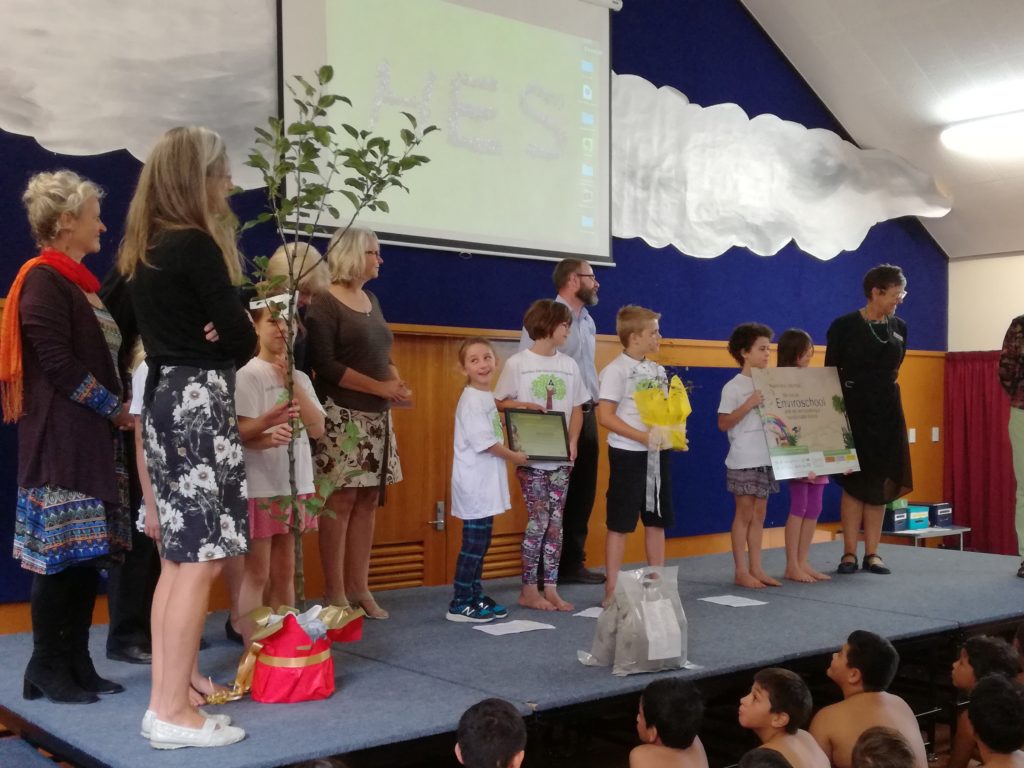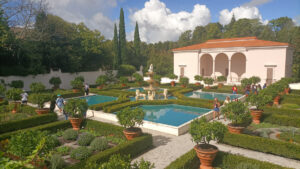First enviro-school presented with green-gold award
Hamilton East School, the first Enviro-school in New Zealand, was awarded a green-gold award on Friday after a 20 year commitment to making its school more environmentally sustainable.

Hamilton East primary school has five compost bins sitting in the shade of a feijoa tree. A garden next to the tree grows tomatoes, lettuce, kale, strawberries and celery – to name a few.
The school planted 10 pear trees and a couple of nectarine trees last year.
It would love to have a full orchard, but space is a problem.
Last week the school was awarded a green-gold Enviro-award after a 20-year commitment to the movement.
It was the first school to become involved with the programme, which now includes 1084 enviro-schools around the country.
“We are a green-gold school,” principal Pippa Wright said during Friday’s award assembly.
“You are all enviro-students,” she said.
Enviro-schools is a New Zealand programme that encourages and educates the teachers and students around environmental sustainability.
It encourages schools to implement environmentally conscious values into day-to-day life.
The green-gold award was given in recognition of Hamilton East’s commitment.
The award ceremony began with a karakia and a haka performed by the school’s kapa haka group, to welcome Waikato councillors and leaders of the enviro-schools organisation.
In attendance were Hamilton city councillor Philip Yeung and Waikato regional councillors Jane Hennebry and Kathy White.
White said the green-gold award was an important milestone for the school.
“Once you get to a level like this it actually shows that you’ve made the concept part of everything that you do,” White said.
White said that the children’s enthusiasm and pride in the movement is something special.
“You’ve also got kids who are actually coming up with their own solutions, growing food in innovative ways. Which I think is really good, if you pose problems to kids and they find their own solutions,” White said.
“And those are the kind of qualities that you actually want for leaders in the future.”
After the assembly, a group of children talked through ways to pack lunches that are more environmentally sustainable.
Suggestions included using foods with their own “wrappers” such as bananas, oranges and eggs.
“And you can put chippies into a container instead,” said student Samantha Gardiner.
Olive Jones, a teacher who has been an important part of the enviro programme at Hamilton East since it began, said the school would love to have an orchard.
“It’s just finding enough space which is really challenging,” she said.
Jones said that some of the fruit and vegetables the children have been growing will be used for a Harvest Festival, being held at the school in two weeks’ time. Left-over fruits and vegetables will be given to families.
The enviro-movement is grounded in Māori values and it is important to embrace those cultural roots, said Heidi Marsdon, chief executive of the Toimata foundation which manages the enviro-schools programme.
Māori students make up 34% of the Hamilton East school’s population, according to the 2016 ERO report, with Pākehā students a close second at 33%.
“Māori perspective is that people are part of the environment not separate,” Marsdon said.
“So, when we bring in a Māori perspective we automatically are part of the bigger world. And I think that changes the way that we look at how we restore the environment,” she said.
“All our learning can come from nature.”
- See related stories




